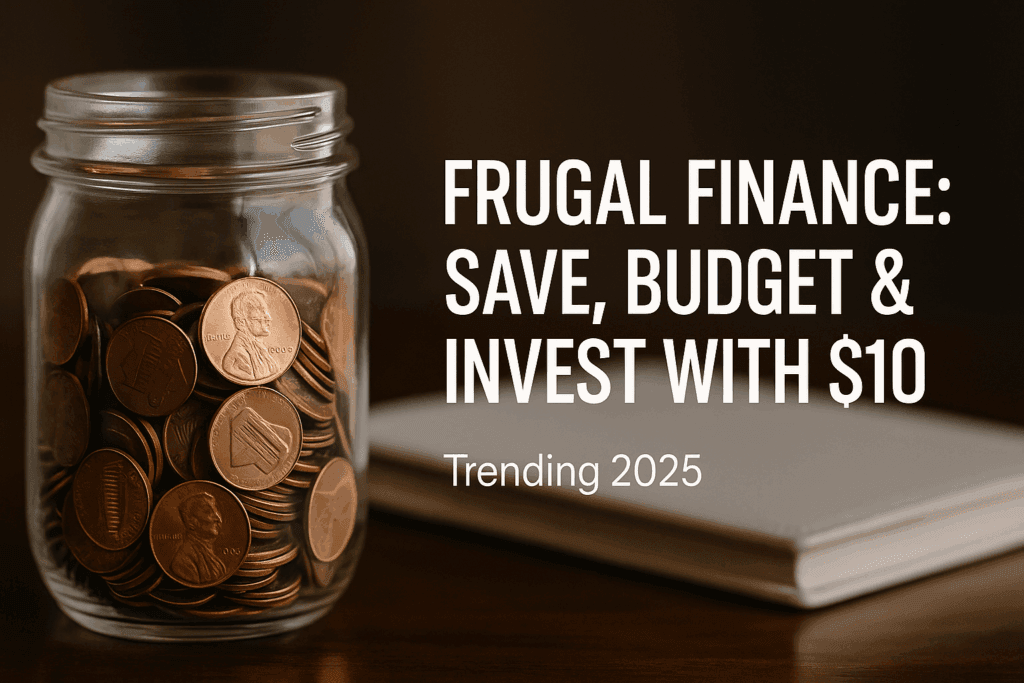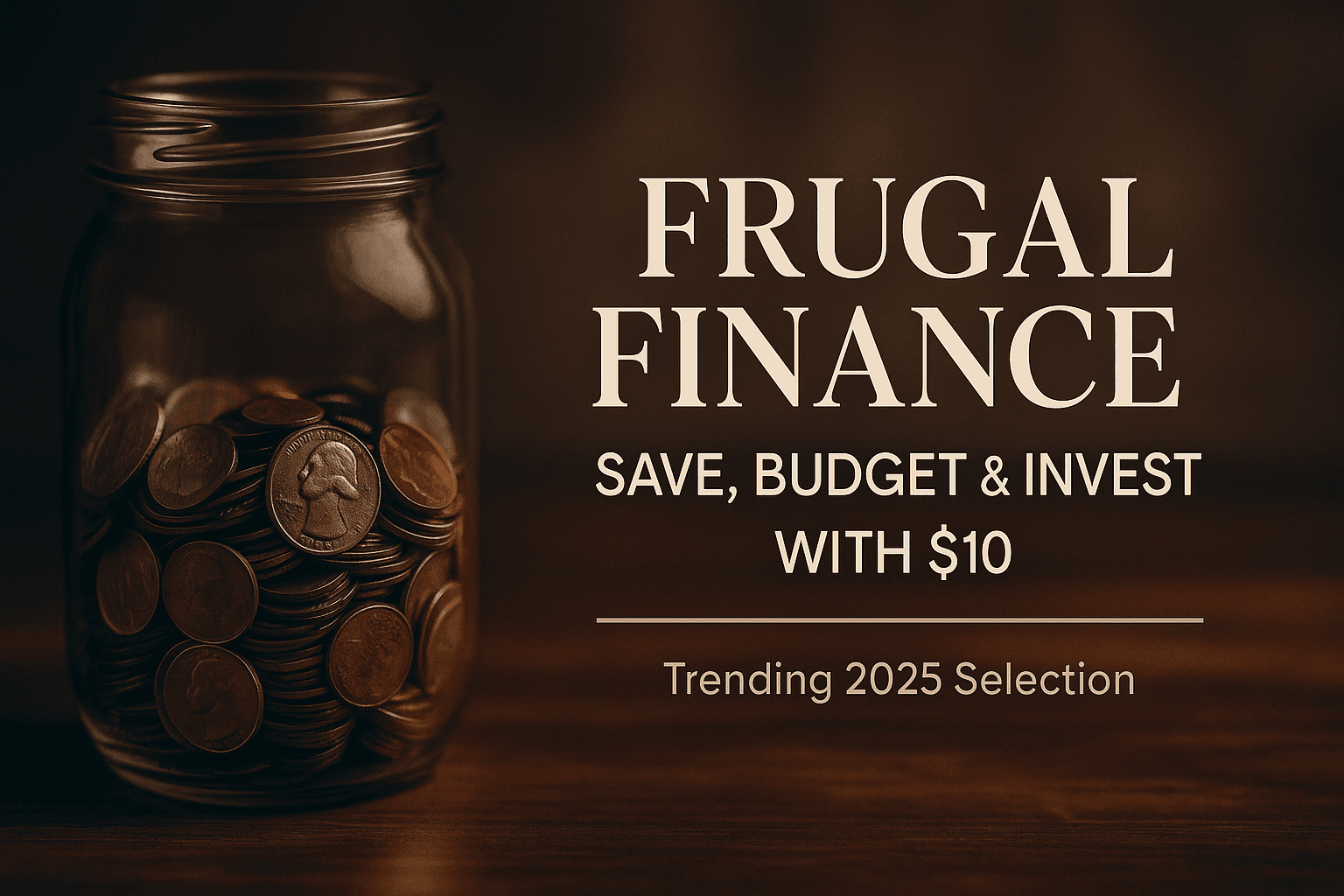🌱 Introduction: Short on Cash, Big on Goals
If you’re exploring frugal finance 2025 strategies, you’re already ahead of most.
This guide shows you how to start with as little as $10, build momentum fast, and create a money system that actually lasts—no jargon, no shame, just practical wins.
💡 Why Frugal Finance Matters
In Korea, the term 짠테크 (jjantech) means smart frugality—making the most of every dollar.
Globally, frugal finance is about saving, budgeting, and investing even when money feels tight.
With rising prices and endless subscriptions, these habits are essential in 2025.
Key Principles:
- Clarity over complexity: simple rules > fancy tools
- Automation over motivation: systems > willpower
- Value-based spending: cut noise, fund what matters
👉 Related Read: Zero-Waste Habits: 3 Practical Steps to Help the Planet
💵 Start With Just $10
You don’t need thousands. Start your frugal finance 2025 journey today with $10 and follow this 30-day plan:
| Week | Action | Goal |
|---|---|---|
| Day 1 | Open a “Safety First Fund” account | Build separation |
| Week 1 | Auto-transfer $2–$5 daily | Habit creation |
| Week 2 | Cancel 1 subscription + negotiate 1 bill | Save $20–$50 |
| Week 3 | 3-day “No Spend Challenge” | Boost savings |
| Week 4 | Automate +1 % income & test a side hustle | Grow income |
📊 A Budget That Actually Works
Option 1: 50/30/20 Rule
- 50 % Needs (rent, bills, food)
- 30 % Wants (entertainment)
- 20 % Savings & Debt
Option 2: Zero-Based Budget
Every dollar gets a job so income − expenses = 0.
Perfect for freelancers or irregular income earners.
⚡ Quick Wins to Save $100–$300 This Month
- Cancel unused subscriptions
- Meal-prep 3 lunches a week
- Switch to LED lighting
- Carpool or use weekly transit passes
- Move to a no-fee bank
- Apply the “24-hour rule” to purchases > $25
🛒 Recommended Tools:
Budget Planner Notebook | Reusable Expense Tracker
💳 Pay Off Debt Smarter
Avalanche: Tackle the highest interest rate first → save more money.
Snowball: Pay the smallest balance first → build momentum.
Pick the method that fits your motivation.
🛟 Build a 3-Tier Emergency Fund
1️⃣ Micro-Buffer: $300–$500
2️⃣ Starter: 1 month of expenses
3️⃣ Full: 3–6 months of expenses
Keep it in a separate account—easy to access, never to spend.
📈 Micro-Investing: Start Small
Once you’ve built your emergency fund and paid off high-interest debt, start investing tiny amounts.
- Begin with $25 a week using dollar-cost averaging (DCA)
- Buy fractional shares of broad ETFs or index funds
- Keep fees low (avoid high expense ratios)
📘 Note: Educational purposes only — do your own research.
🚀 Side Hustles That Work with Zero Cost
Boost income to accelerate savings:
- Freelance writing or virtual assistance
- Dog walking or delivery gigs
- Reselling digital products or used items
Set a first-month goal of $100–$200 extra income.
👉 Also read: Morning Rituals of Highly Creative People
🧾 Weekly Money Review (15 Minutes)
- Check balances & savings growth
- Track debt drop & savings rate
- Choose one improvement for the week (+1 % automation or cut $10)
Small, consistent tweaks → frugal finance freedom over time.

❓ FAQ
Q1. Can I really start with only $10?
Absolutely. Habits > amount. Start tiny, grow steady.
Q2. Which budget is best?
50/30/20 for simplicity, Zero-Based for control.
Q3. Invest with credit card debt?
Pay off high-interest debt first unless employer matches retirement funds.
Q4. Emergency fund timeline?
$500 this month → 1 month in 6 months → 3–6 months in 1–2 years.
Q5. Motivation tips?
Track progress, celebrate wins, automate increases.
🌟 Final Reflection
Frugal finance—or jjantech—isn’t about deprivation.
It’s about small, consistent actions that compound into freedom.
Start with $10 today. Automate savings. Cut one unnecessary expense.
By this weekend, you’ll already be living proof that smart money habits don’t require a big paycheck—just clarity and consistency.
🔗 Internal Links for SEO
- Zero-Waste Habits: 3 Practical Steps to Help the Planet
- Morning Rituals of Highly Creative People
- Life-Changing Books 2025 You Must Read
